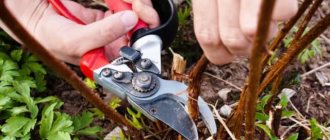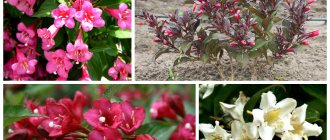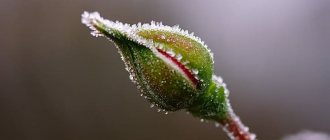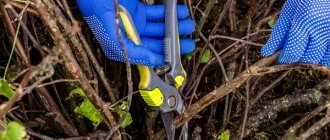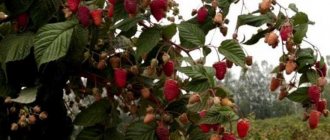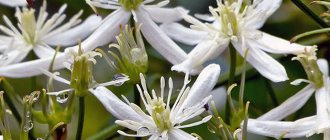Autumn is the right time to care for and prepare cherries for the coming winter. Gardeners carry out sanitary pruning of dry and damaged branches, apply fertilizing so that the tree gains strength over the winter and bears fruit abundantly in the summer. They begin to prepare the crop for the upcoming frosts in different ways, it depends on the climatic characteristics of the region where cherries are grown: in Siberia, in the Urals, in the Moscow region.
The importance of autumn care
By the end of the growing season, the growth of cherry branches stops. The tree enters the dormant stage and prepares for next spring. At this moment, the formation of flower buds and lignification of the branches and trunk occurs. In autumn, cherries need minerals and moisture-replenishing watering. This makes it possible to stock up on nutrients in order to emerge from the dormant stage in the spring without stress.
In winter, there is a high risk of cherry trees being damaged by fungal diseases. Their spores fall on the plant in the fall, and with the onset of warm weather they begin to rapidly reproduce. Therefore, it is important to timely treat the surrounding area and the plant itself with fungicides against diseases.
The risk of infection by pests, which become especially numerous in the fall, cannot be ignored. Insects are able to move from a neighboring garden and lay eggs for reproduction. Therefore, measures to prepare cherries for winter include inspecting the tree and spraying with insecticides.
In winter, threats to cherries include rodents, squally winds, frosts and precipitation that can damage the crown. This makes it difficult for shoots to grow and prevents active sap flow. Therefore, the yield of damaged cherries is significantly reduced. To prevent branches from breaking, the tree is covered before winter.
Features of caring for cherries in autumn
In autumn, cherry trees stop growing young shoots. But it is during this period of growth dormancy that future flower buds are born and lignification of the trunk occurs. In order for spring flowering to be successful, the plant’s energy reserves are replenished in advance with the help of fertilizers.
In the autumn, pests become active before hibernation. They successfully attach themselves to a tree trunk, spend the winter there, and wake up at temperatures above +15°C. Moreover, they can lay eggs in the tree, from which offspring will develop in the future. Effective methods of pest control are a thorough inspection of the trunk and its treatment with fungicides and insecticides.
As cold weather approaches, cherries need to insulate their roots - otherwise severe frosts may damage them.
Autumn pruning
Many gardeners are convinced that stone fruit crops do not require pruning, but this opinion is erroneous. Trimming the shoots in the fall greatly increases the number of berries and improves their taste. If you refuse this activity, the crown thickens, but the abundance of the harvest decreases.
Time and timing of pruning
It is allowed to remove unnecessary shoots on cherries in spring or autumn. In this matter, much is determined by the purpose of pruning:
- To ensure that the garden has a well-groomed appearance and the crowns of fruit crops are formed correctly, pruning is done in the fall;
- In the spring, the procedure is repeated, but only those branches that have been damaged by frost are cut off.
There is no exact time when cherry trees should be pruned in the fall. Experienced gardeners advise performing this procedure from mid-September. The deadline for the procedure is mid-December.
Correct execution of the procedure
For a tree, pruning is a kind of surgical operation. Therefore, it is important to carry out the procedure taking into account all the rules in order to properly prepare cherries for winter:
- It is allowed to carry out the procedure when the plant is in the dormant stage. Therefore, pruning is performed after the cherry tree has shed all its leaves.
- Remove diseased and dry branches. To prevent re-spread of the disease, all fallen leaves and cut shoots are destroyed.
- If the crown is too thick, pruning is done in parts over several years. Simultaneous removal of excess shoots leads to the death of the plant.
Features of the procedure depending on the age of the tree
The tool for cutting branches is chosen based on the age of the cherry. The branches of young trees can be easily cut with a sharp knife. If the cherry tree is old, it is more convenient to use garden pruners or cut down the shoots with a hand saw.
Important! You cannot cut branches in the first year after planting the plant. Otherwise, winter frosts will destroy the tree.
A young plant is not pruned every year in the fall. To do this, the main branches are left on the trunk, and all excess shoots are cut off. Seedlings over two years old are pruned using the shortening method. To do this, the central branch is cut by 25 cm, and the side branches are shortened by 35 cm.
Features of pruning depending on the type
When pruning cherries, they take into account not only the age of the plant, but also the species characteristics:
- For pruning cherry trees, use the standard method;
- It is easier to trim felt cherries in the fall using the shortening method;
- for the bush variety, pruning is used to thin out the crown.
To avoid possible thickening, during the pruning process they get rid of branches growing inside the crown. Broken and diseased shoots are also removed. It is recommended to complete the procedure before the onset of severe frosts. Otherwise, the survival rate of the plant in winter will be significantly reduced.
Measures to combat diseases and parasites
Juicy, fragrant and sweet cherries are a valuable find for garden pests, which can deprive the tree of its beautiful appearance. They eat flowers, foliage, fruits and the trunk. Cherry tree needs regular treatment. This mainly concerns the moment of ovary and flowering. Autumn treatment is considered necessary in the prevention of parasites and diseases.
The main steps for treating trees against pests:
- after the leaves have fallen, perform sanitary pruning of the branches, paying maximum attention to damaged and diseased ones;
- clean and seal cracks and wounds from which gum is actively flowing;
- Destroy leaves, branches and plant debris;
- when the first frosts have passed, the bush and the tree trunk circle should be sprayed with a five percent urea solution (nitrogen fertilizer).
Autumn care for laying a good harvest
Although cherries tolerate drought and low temperatures well, they still need care and quality preparation for winter. In summer, the plant needs protection from diseases and pest invasions. During drought, the tree must be watered and fed with fertilizers. With proper care of cherries in the fall, the tree pleases with abundant flowering and produces a high yield.
Digging the soil
In autumn, the soil in the tree trunk circle must be dug up to a depth of 15 cm. There is no need to dig deeper so as not to harm the roots of the plant. Finish the treatment of the tree trunk circle by loosening the soil with a rake. Parts of weed roots found during digging must be removed.
Watering
Immediately after digging and loosening the soil, water the cherries generously. Thanks to the unique preparation before moistening, the water penetrates deep into the soil and does not freeze longer. To ensure high-quality watering and water penetration to a greater depth, at least two buckets are poured under each tree. In this case, water should be used slightly warmer than the ambient air on the day of watering. To reduce water consumption and prevent its spreading over the area, the tree trunk circle is limited to a trench 10 cm deep.
Top dressing
It is advisable to water together with the application of fertilizers. This will help the beneficial substances quickly penetrate to the roots of the tree. It is recommended to fertilize cherries in the fall in the first days of September, before the plant has time to enter the dormant stage. This will make it possible to absorb the fertilizer immediately, rather than waiting for the onset of spring.
Important!
Any mineral complexes that do not contain nitrogen are suitable as a top dressing. This substance stimulates growth and reduces the tree's resistance to low temperatures.
You can fertilize cherries with compost. It is added in the following quantities:
- if the age of the tree does not exceed 7 years, add 2 kg for each square meter of soil near the trunk;
- for older trees, the amount of compost is increased to 3 kg.
You can use mineral complexes with a predominance of potassium and phosphorus as a top dressing:
- For young trees, it is enough to add 1 tbsp per square meter of soil. l. potassium chloride and 2 tbsp. l. superphosphate;
- For fruit-bearing plants, this norm is increased by 1.5 times.
Disease Prevention
Preventive treatment of cherries against diseases and pests in the fall begins with the cleansing of lichen, moss and peeled bark from the trunk. It is convenient to perform this procedure with a brush with metal bristles. Then the plant residues in the tree trunk circle are collected and burned. Often during this, clutches of pest eggs are discovered. They are also destroyed manually.
You may be interested in:
Cherry diseases: description with photographs To help your tree cope with diseases, you need to be able to recognize them. After all, only by knowing the enemy in person can he be...Read more...
In case of moderate infestation of plants by pests, cherries are treated with folk remedies:
- ash-soap solution prepared from 10 liters of water, 400 g of ash and 50 g of liquid soap;
- a solution of 50 g of birch tar and 10 liters of water;
- infusion of 1 kg of pharmaceutical chamomile and 10 liters of water.
If there are too many pests, the cherries are treated with chemical insecticides “Karbofos”, “Aktellik” or “Bankol”. As a preventative measure, spray the plant with Bordeaux mixture using a solution concentration of 1%. For young trees, 2 liters of solution is enough, and for fruit-bearing trees the volume is increased to 10 liters. At the same time, the tree trunk circle is also sprayed.
Insulation and whitewashing of logs
Since the climate in Russia is changeable, it is worth protecting the fruit tree from the vagaries of the weather in advance. After all, frosts that hit before the snow cover is established can destroy a young plant. Therefore, for young cherries up to four years old, the trunks are wrapped in burlap, old newspapers and tied on top with spruce branches. Before this, it is recommended to wrap the trunk at the base with plastic mesh to prevent damage by rodents.
Mature trees have their trunks whitened for additional protection. A layer of whitewash will help protect the tree from too much sun in winter. If you add a little iron sulfate to the lime, this whitewash will repel rodents. The trunks are treated with lime after the rainy season ends so that the paint layer remains on the plant longer.
In the spring, during flowering, cherry trees sometimes shed flowers and ovaries. This occurs due to high soil acidity. Therefore, every 5 years it is recommended to apply lime fertilizers to the soil. They will help preserve the green part of the plant.
Rule two: thorough watering
Water the soil immediately after digging - the moisture will penetrate into the deeper layers of the soil. To moisten the soil to the maximum depth, pour a pair of buckets under each trunk. Take warm liquid - its temperature should be higher than the daytime air temperature on the day of watering. To prevent the liquid from spreading, make a small trench in the shape of a semicircle.
Shelter for the winter
Experienced gardeners advise not to rely on the winter hardiness of this crop and to cover the fruit tree for the winter in late autumn. It is especially recommended to do this for young cherries. Trees are usually covered using mulch. Young plants are additionally tied with spruce branches. The mulch is placed so that it does not touch the tree trunk. Otherwise, during thaws, the bark will become warm and rotting will begin.
In this way, bush and felt cherries are covered before the onset of frost. The tree-like form of the crop is additionally wrapped in light burlap, white paper or non-woven covering material. This precaution will protect the tree from mice and other rodents.
How to prepare a tree for winter
To prevent the buds on the cherry from freezing, and the roots and trunk from being damaged by temperature fluctuations, the tree is prepared for the winter as follows:
- The branches bend down. Old and dry ones are removed.
- Cover the pressed branches with straw or tops.
- Cover the soil under the tree with a thick layer of snow if it has already fallen. Sometimes they shovel up the snow, creating a snowdrift.
- Cover the barrel with a burlap cover or wrap it with paper.
Features of preparation for cold weather by region
When carrying out preparatory activities, it is important to care for cherries, taking into account the climatic characteristics of the region. If the tree grows in the Moscow region or regions belonging to central Russia, preparation is carried out in accordance with the standard scheme.
For fruit trees growing in Siberia or the Urals, more serious measures are needed:
- Cherry must be insulated. Young seedlings are covered especially carefully, as they are less resistant to low temperatures.
- Pruning is carried out immediately after the foliage leaves and is completed before mid-September so that the wounds have time to heal. Later, severe frosts often occur. Because of them, the plant can suffer greatly.
How to treat cherries against moniliosis
Moniliosis is a fungal infection that affects cherries, plums, and other berries. Spores are spread by insects and gusts of wind. Dangerous weather for infection is wet, cool (early spring, rainy summer, late autumn). Fungal spores overwinter in affected fruits and spread in the spring.
Signs: premature yellowing and flying of leaves, drying out, mummification of fruits, blackening of small branches, cessation of flowering. The affected part of the plant appears burnt (monilial burn). The spore pads are grayish in color and are visible on shoots and fruits.
The main fight against moniliosis occurs before flowering, and in the fall preventive measures are taken to prevent the harmful fungus from overwintering. After fruiting, but before the onset of cold weather, sanitary pruning is needed, and then on a dry, windless day, treat the cherries in the fall for diseases.
Medicines for moniliosis:
- Abiga-Pik – copper-containing liquid, diluted 50 ml in a bucket of water;
- Horus – fungicide for plants, powder, 2-3g/10l;
- Topsin-M – fungicidal powder, 10-15g/10l, very toxic, teratogen;
- Cuproxate is a copper-based suspension, diluted in half;
- Phytoflavin is a fungicidal liquid, 20ml/bucket, safest for people.
All treatments follow the same principle: the first - after pruning (or after heavy autumn rain), the second - 14 days after the first. With all products, except phytoflavin, you need to work in protective clothing - a respirator, goggles, gloves, a fully closed jacket and pants (you can put a raincoat on top). The cherries are sprayed with a spray bottle, the procedure is repeated no more than 2 times per season. The solution should get on all shoots, roots, and trunk.
Autumn transplant
If the cherry tree needs to be replanted, this is done in the fall, since in the spring the plant begins to grow early.
Important!
It is recommended to perform this operation in late September or early October.
Step-by-step work:
- The stem is dug in a circle, retreating 35 cm from the trunk.
- The soil in the resulting circle is watered abundantly.
- Determine the main roots holding the plant and file them down.
- The cuts are cleaned with a knife.
Then strong poles are placed under the freed root system and the plant is pulled out with their help. It is recommended to immediately transplant it into a previously prepared hole, the dimensions of which exceed the diameter of the earthen ball. At the same time, the roots are carefully straightened so that they do not bend upward. The hole is filled up, occasionally shaking the tree by the trunk to fill all the air voids.
The almost filled planting hole is compacted well, directing the force from the edge to the center. Then add the remaining soil and water the transplanted plant abundantly.
How to treat cherries with copper sulfate
Copper sulfate is sold in country and construction stores. This is a bright blue powder that must be diluted in water. Dosage: 20-30g per bucket of water to prevent cherry diseases and 50-100g to treat fungal infections. An enamel bucket is suitable for dilution. A small amount of water is poured into it, vitriol is added, and stirred. When the liquid acquires a uniform blue color, add water to the top.
Cherries are treated with a spray bottle or hose with a fine spray nozzle. This treatment is called sprinkling. The goal is to cover the cherry as much as possible with drops of the solution. You can additionally treat cuts and wounds on the trunk with a stronger preparation - this will reduce the chance of overwintering pathogens. The procedure is carried out twice with an interval of 2 weeks.
Important! Precautionary measures: you need to wear gloves, a respirator, and goggles. Do not allow the vitriol to come into contact with the skin; after treatment, change to clean clothes.
Removing overgrowth
When maintenance work is not carried out at all or is carried out irregularly, a lot of small cherry shoots form in the vicinity of the mother plant. It draws nutrients from the soil and root system of the plant for its development. This leads to a decrease in yield and deteriorates the quality of the berries. Therefore, young shoots are uprooted.
The only effective method to get rid of growth is to remove it manually:
- Shoots are uprooted as soon as they appear on the surface.
- Shallow holes are made around the roots of the mother plant and the shoots emanating from them are cut off.
- The resulting wounds are filled with garden varnish.
A sharp knife is used to cut shoots. In this case, after removing the shoots, there should be no stumps left, since new branches grow from them very quickly.
How to treat a cherry trunk
Correctly treating cherries in the fall against diseases means making your life easier in the spring. Fitolavin treatment is effective for therapeutic and preventive purposes. It is carried out twice during the growing season; it can be applied before harvesting the fruits. The interval between treatments is at least 5 days, more is possible.
The product is diluted in warm water (20 ml per 10 liters), applied from a spray bottle in small drops (“mist”). Precautionary measures: protect your face and respiratory organs with goggles and a respirator. Contact with skin is not dangerous; contact with soil is undesirable, but not dangerous if only once. After processing, mineral fertilizers are applied under the roots of the cherry, and the lower part of the trunk is whitened.
Prevention
To prevent excessive growth, the condition of the tree trunk circle is constantly monitored. All fallen berries and seeds are collected. Otherwise, after overwintering, they will germinate with the onset of spring. A spreading tree growing next to a cherry tree is good at getting rid of young shoots. But in this case, the mother plant will also be deprived of light.
The choice of cherry variety also affects the formation of shoots. Usually it is provided by self-rooted seedlings. If cherries are grown in a seed yard, they do not form root shoots.
Pruning cherry trees in spring for beginners. Why cherry trees need to be pruned in spring
Cherry differs from other fruit and berry crops in its great capriciousness:
- It is susceptible to serious diseases - moniliosis and coccomycosis.
- Many varieties grow long, thin branches that hang down, with buds only at the tips.
- The thinnest branches almost always freeze out in severe winters.
In any of the three cases, many “empty” shoots are formed on the cherry, that is, without buds at all, with a small number of them, or with buds, but dead ones that will not wake up in the spring. And only when the tree awakens can you accurately determine which branches are alive and which need to be cut out.
For an inexperienced and inattentive gardener, it is better to prune cherry trees during bud break.
I followed the recommendations: prune the trees before buds open. Everything went well on the apple and pear trees. The trees blossomed and pleased with the harvest in the summer. But with cherries the opposite happened. I cut out all the branches that were unnecessary, in my opinion, so that the crown was sparse and beautiful. And when leaves and buds began to appear, I saw that almost half of the branches left were dry, the buds on them had not awakened. As a result, I had to prune the already rare cherry tree again. There is practically nothing left of my cherries.
Only a keen and experienced eye can recognize viable ones among the numerous still dormant branches. You won’t break every branch, look to see if the bark is wrinkled, or pick it all over to determine whether there is a green layer there. Therefore, I now prune cherries at the beginning of bud break, when it is already clearly visible: which branches have overwintered and are ready to grow. I also agree with the opinion that to prune a cherry tree, sometimes it is enough to remove the dry branches, which are always in abundance on it. The crown will become less thickened, all that remains is to correct it a little. If you take my experience into account, then do the pruning carefully so as not to damage the already swollen buds: carefully pull the cut branches out of the crown, and cut the large and gnarled ones into pieces.
Common mistakes
Many gardeners do not water cherries in the fall, believing that this is not necessary. In fact, the plant needs frequent watering at this time, especially young seedlings. Mature fruit-bearing trees are allowed to be watered less frequently, but more abundantly. After fertilizing and digging around the trunk circle, the tree is watered for the last time. Then the sap flow slows down and the tree goes into a dormant state.
Pruning cannot be done by simply shortening the branches. It is recommended to make cuts at an angle of 40 degrees. Young seedlings must have their tops shortened.
With the onset of autumn, one should not forget about weeding in the circle around the trunk. They also make sure to dig up so that the quality of next year’s harvest is not affected.
Autumn feeding of cherries after fruiting
Autumn fertilizers are potassium-phosphorus fertilizers.
Important! Under no circumstances should you think about feeding nitrogen fertilizers in the fall (like urea or ammonium nitrate ).
To form seeds, all stone fruit crops need a sufficient amount of calcium in the soil , so periodically you should fertilize the cherries with calcium fertilizers. In general, fertilizing can be combined with the soil deoxidation , which is recommended to be carried out once every 5 years. Dolomite flour is perfect for this . Wood ash (used as a potassium fertilizer) also contains a lot of calcium.
Pay attention! The site already has a detailed article about how to feed cherries in the fall (after fruiting and harvesting) .
Digging the trunk circle
Proper preparation of cherries for winter in the fall includes the obligatory digging of the cherry tree trunk. To ensure good access of moisture and air to the roots, the soil in the tree trunk circle needs to be dug up to a depth of 15 cm. It is not worth digging deeper, because that is where the roots are located.
Autumn digging helps destroy pests that burrow deeper into the ground for the winter. Frost will deal with them better than any chemical. If there were a lot of pests in the garden, then it is best to dig up the entire garden, and not just the tree trunks.
Freshly squeezed grapefruit juice: health benefits and harms
Important! Before digging, you should carefully clean under the trees: remove the carrion, rake and burn the leaves. This is necessary to fight diseases.
The diameter of the trunk circle is equal to the diameter of the crown. Digging is best combined with fertilizing.
Interesting on the topic: What to do with carrion or how to turn Waste into Income
Pest protection
To protect the cherry from such troubles when the first frost occurs, it is recommended to spray the tree trunk circle with a 5% urea solution. It is also worth considering that cherries are often attacked by lacewing caterpillars, hawthorn and cherry moths.
These parasites damage the kidneys at a time when they begin to swell rapidly. Insects feed not only on them, but also on the juicy young leaves of the plant. To get rid of unwanted pests once and for all, it is recommended to spray the trunk and branches of trees with a solution that will contain an insecticide.
